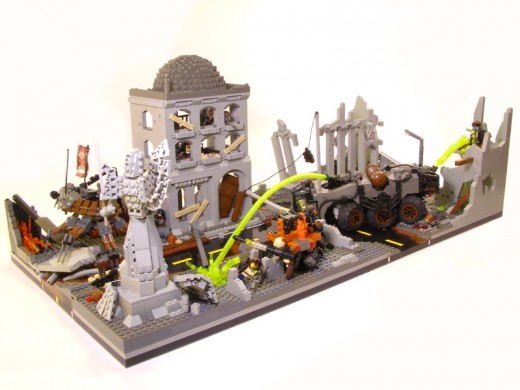How to Choose Toys For Your Child
As you and your child are taking some time walking around the mall, your child pointed on something (a toy) and ask you "Mommy I want that one". Now as a good parent it is your task to make sure that you choose the right toys for him. How? Here are some points that may help you on choosing toys and materials for your child.
1. Safety is vital.
The most important factor to consider as you think about toys for your child is safety. Look at the toy and consider your child's stage of development. Are there loose parts that could casuse a choking hazard? Could little fingers get pinched? Is your child too large (Physically) for safe play with the toy or equipment?

2. Make sure theat the toy is developmentally appropriate.
In today's toy market, boxes are labeled with the recommended ages for play.
these suggestions are based on the average child and assume that the child is at the stage of development that is usual for his/her age. This is imporatant information because it gives you a basis for evaluating the toy; however, you are the one who knows the most about your child. It is up to you to consider whether the toys is apporpriate or not. For example, your child may be behind most three-year-olds in physial development, but may be well ahead in language development. Consider these differences as you make your choices.
Ask yourself if your child will be intererested in this toy. It is important for you to be observant and to notice what interests your child. Does he like to pretend to drive a vehicle? Does she like to build with blocks? Does he enjoy stories about the farm? Being aware of your child's interestes and making choices based on those interests shows that you respect your child's feelings and value her ideas.
3. Think about the durability of the toy.
Some items that you choose for your child are meant to be "short-term" choices--one example of this would be art supplies. You expect your child to explore with these materials and use them up after a period of time. Toys,on the other hand, should be build so that they will last and provided play opportunities for much longer periods of time.Purchising cheaper plastic toys may seem frugal, but buying better made (and sometimes, more expensive) ones may save you money in the long run and may be safer for your child.
LEGO Toys

4. Choose toys that encourage your child's creativity.
Making toy choices that can be used in a variety of ways helps you to encourage your child to engage in creative play. Look for toys that are versatile and open-ended. For example, instead of purchasing your 10-year-old child a robot that runs on bateries and just walks along and blinks, think about buying a set of blocks with parts that would allow him to build his OWN robot, or house, or spacehsip, or hundreds of other things!. A very good example of these are LEGO toys.
5. Choose toys that help children learn about the real world
Helping your child learn about real-life skills can be acccomplished through providing toys that mirror real life. Don't worry about whether a toy is "for a boy or a girl". Consider instead what the child will be learning using the toy. Things such as kitchen dishes and utensils tools for woodworking experiences, or materials for playing "office" or "restaurant" are good choices that help children role play activities that help develop real-life skills. In addition, try to remember to make choices that reflect the diversity of our culture-- for example, choose books that illustrate children from various ethnic backgrounds.
As you choose toys, think of them as the "tools" with which your child does his /her work. A child's work is play, and it is up to you to be sure that the toys and materials in your child's life are appropriate. It is also your responsiblilty to be sure that your child has access to toys. Toys on a low shelf are much more accessible than toys in a toy box. In addition, your child needs enough space in which to use toys for exploration and people (other children or adults) with which to play and interact. You, as a parent, lay the foundation for learning with t he toys and materials you choose for your child. Put some thought into it and make those choices good ones.









